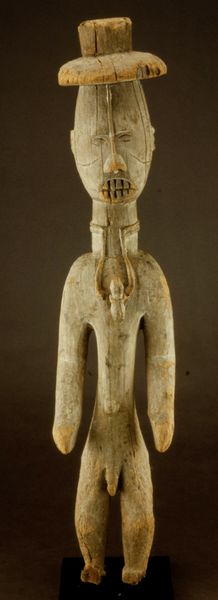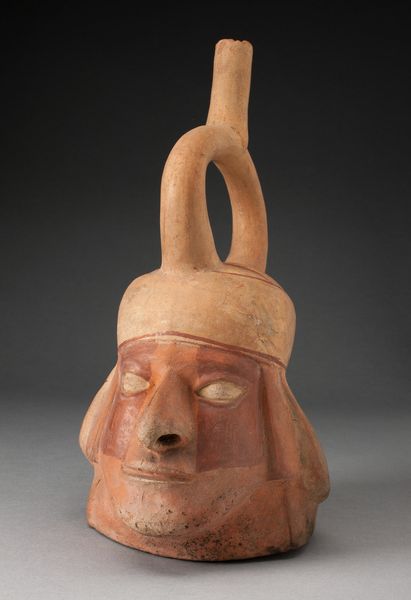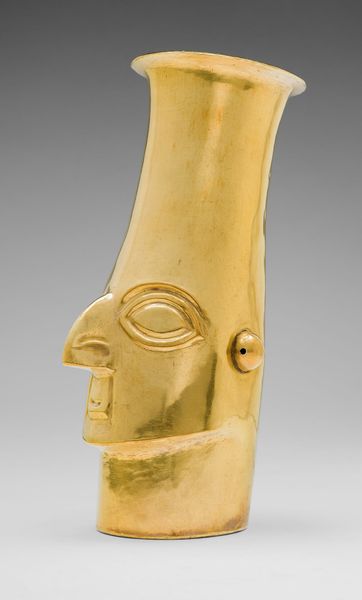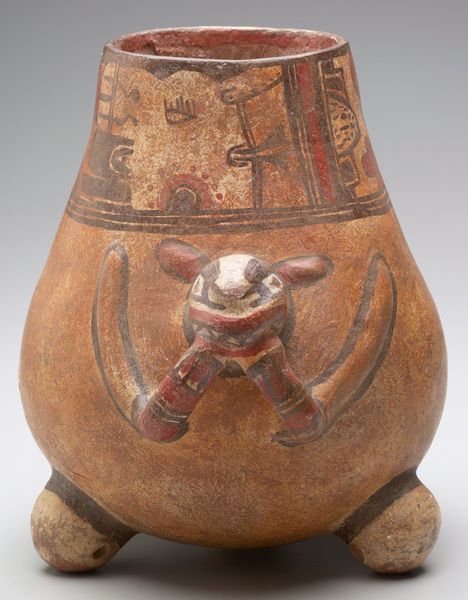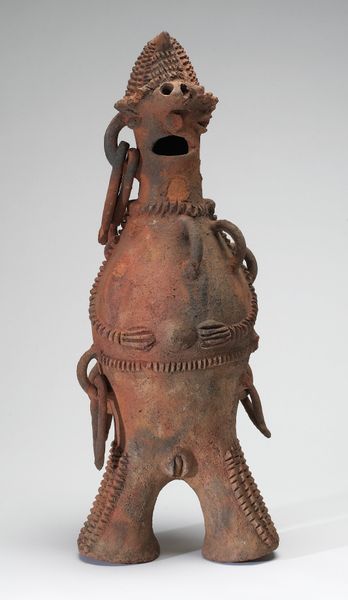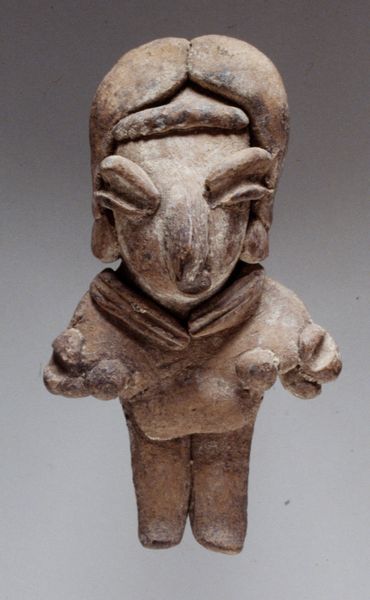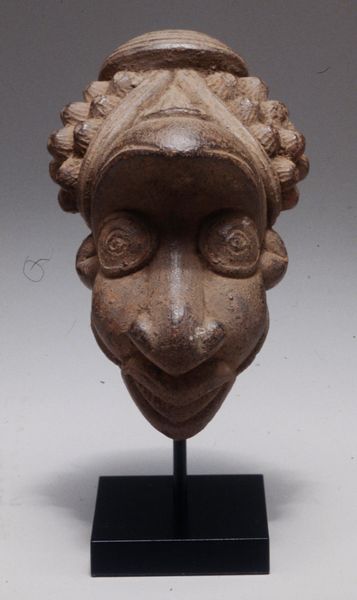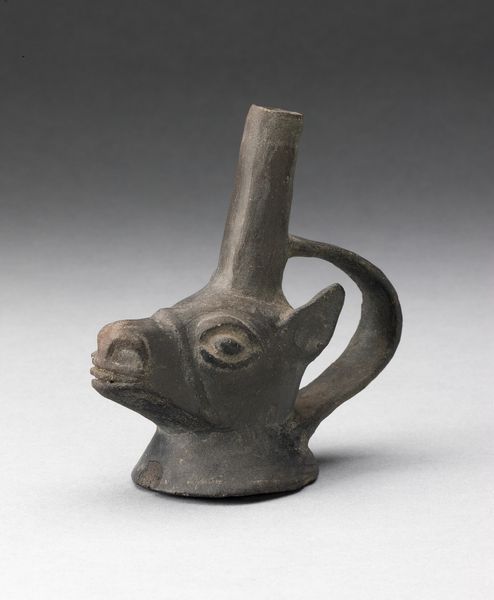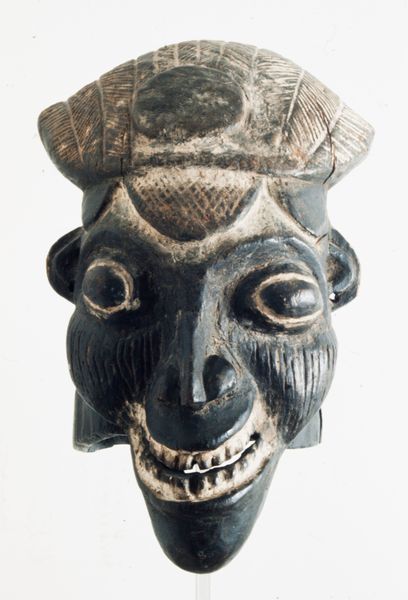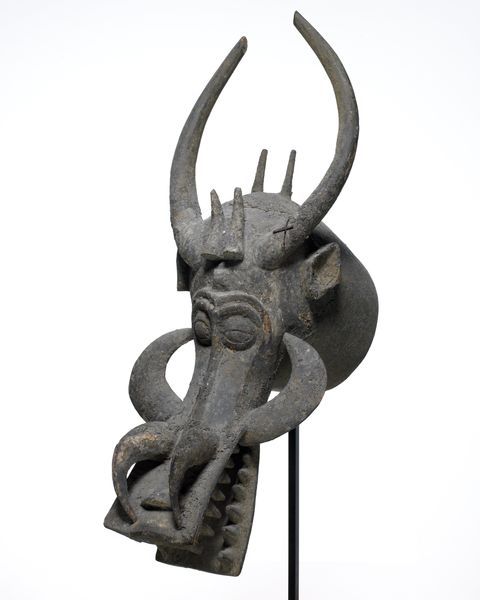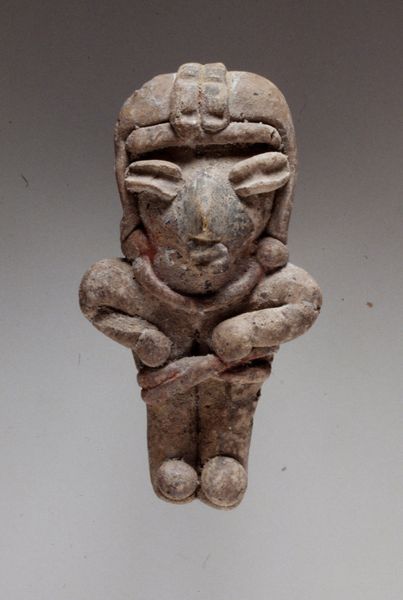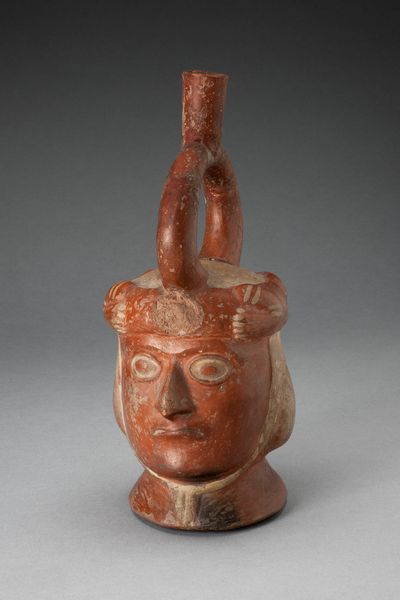
carving, sculpture, wood
#
african-art
#
carving
#
sculpture
#
figuration
#
sculpture
#
wood
Dimensions: 21 1/2 x 12 3/8 in. (54.61 x 31.43 cm)
Copyright: Public Domain
Curator: This striking object is an Asa Kate Mask, carved from wood likely in the late 19th century. It resides here at the Minneapolis Institute of Art. Editor: My initial reaction is... powerful. The stylized features – those large, protruding eyes and prominent teeth – project an almost unsettling intensity. The wood grain adds a certain weightiness to the entire piece. Curator: Masks like this held considerable significance, particularly within the Ekpe society, a powerful regulatory force in many communities. Think of them as potent visual declarations of authority and ancestral connection. The imagery links present actions to inherited power structures. Editor: So, not merely decorative objects, but active participants in community governance and spiritual life? I’m curious about the small figures perched atop the mask. Curator: Excellent observation. Those are representations of ancestors. By including them, the wearer embodies not just individual agency, but the collective wisdom and judgment of past generations. Notice how their gaze is directed outwards, suggesting vigilance and protection. Editor: And that geometric pattern framing the eyes – is that decorative, or does it carry a deeper meaning? Curator: The geometric patterns, common in many traditional African art forms, often served as mnemonic devices or symbolic codifications of beliefs. In this case, the lines might represent the boundary between the seen and unseen worlds, emphasizing the mask's role as a portal. It serves to legitimize control by anchoring it to established cosmic beliefs. Editor: It’s remarkable how the artist managed to imbue this object with such a palpable sense of authority, isn’t it? The formal aspects are inextricably linked to its societal role. One really gets the impression that the wearer held immense sway, backed by the power of tradition and ancestral might. Curator: Precisely. Understanding its role as both a political symbol and spiritual object gives us insights into the community dynamics that informed its creation and its deployment. Editor: I see a narrative beyond just aesthetics, where the art reflects something profound about human culture. I feel honored to be reflecting on that history now. Curator: Indeed, art provides us with pathways into the past. Hopefully we've illuminated just a fraction of this remarkable mask’s multifaceted narrative today.
Comments
minneapolisinstituteofart almost 2 years ago
⋮
This mask represents Asa, a child-devouring spirit who appears during male initiations to challenge and attempt to frighten the initiates. As part of the transformation process, boys between the ages of four and fifteen are taught secret information about their group's traditions and ritual objects. They live in a special house apart from the rest of the village during this time. When their initiation is complete, a big festival is held and the young men are returned to their homes riding on the shoulders of their fathers or maternal uncles.
Join the conversation
Join millions of artists and users on Artera today and experience the ultimate creative platform.
